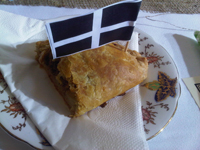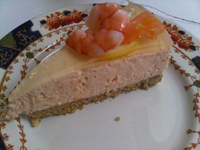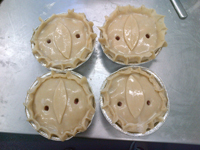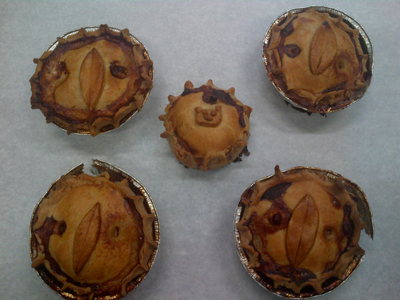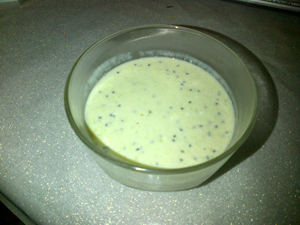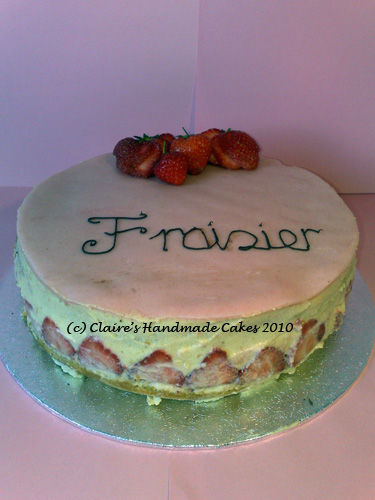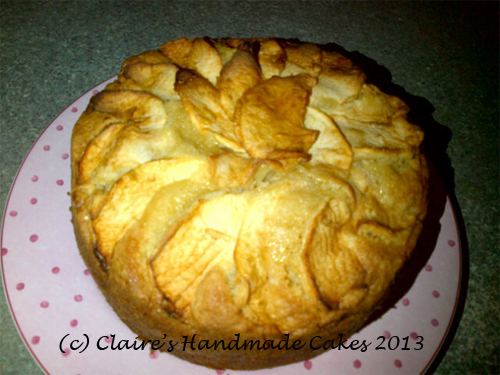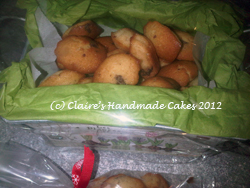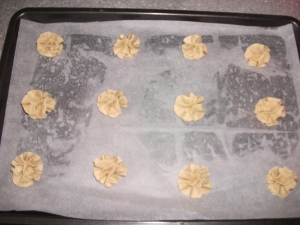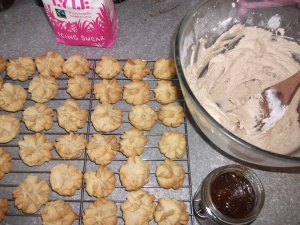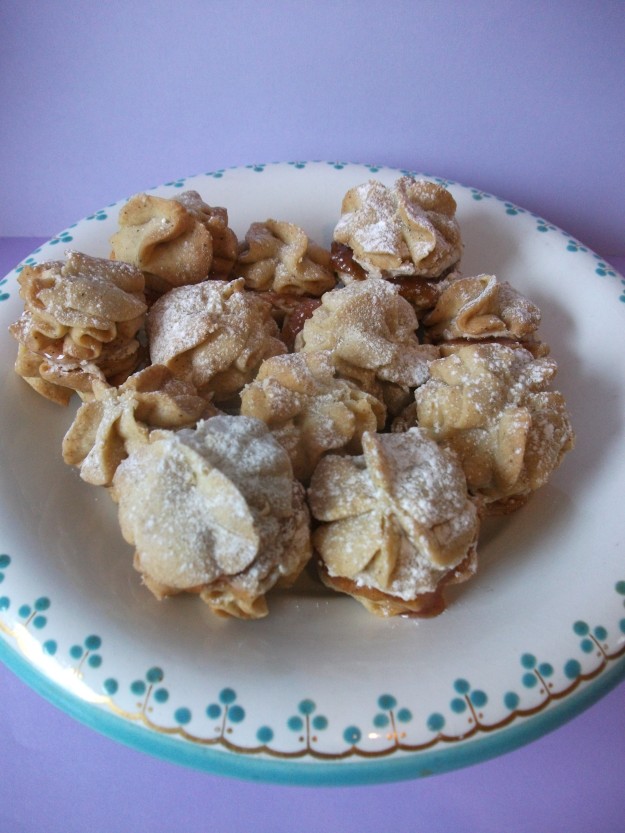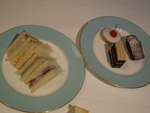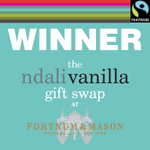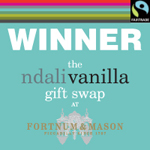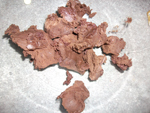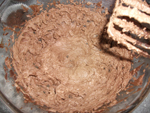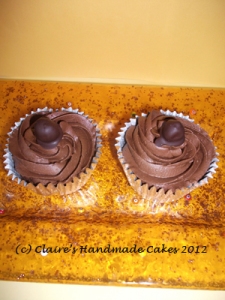Last November, I went to the filming of the semi finals of ‘Food Glorious Food’, ITV’s search for the best home-cooked dish in the UK. I was invited to attend as a WI member, and even though I was the only representative of my branch, I knew that there would be plenty of people to speak to and I had my trusty book with me in case conversation stopped (or failed to start!).
After registering, we were given lots of cups of tea and after an hour or so, were filmed arriving en-masse at our location. This was done twice, to make sure they had our best angles! Then after more tea, we were called into the dining room and we knew that eating would be imminent.
Carol Vorderman introduced the show and Tom Parker Bowles introduced his favoured dish – the Cornish pasty. He got off to an auspicious start ‘Good afternoon ladies and gentlemen’. Oops. A quick re-take later and we were ready to start tasting. As soon as we all had food in front of us, it was time to eat.
Having been glued to another cookery show on a different channel, I turned my pasty over to test for the ‘soggy bottom’. There was no sogginess, though some of the filling had leaked and this had caught. The addition of the Cornish flag was a nice touch but by now, I was peckish and started to eat. As instructed, I picked up my pasty in my hands and ate it, no Minnie Manners here!
Overall, the pastry was well cooked and not too thick. There was a good layer of potato. The meat was cooked OK (it’s here that I make the confession that I haven’t eaten beef since 1987, for fear of developing mad cow disease!) and the vegetables that were there, were well cooked. Personally, there weren’t enough vegetables for me and the meat seemed under-seasoned. It seems a bit mean to say this (as I know it’s not easy cooking for lots of people), but it was a bit bland. It was lacking something and needed a sauce or something to give it a bit of oomph. It seems a bit sad that the first beef I’ve eaten in 25 years was this, as it was an underwhelming return.
We were interviewed (I wasn’t! In fact, I didn’t make the final edit at all!) and then course number 2 was presented. I must admit, when I saw the menu, I wasn’t immediately sold by the concept of a smoked salmon cheesecake. I reserved judgement until I tried it and it certainly looked pretty when it was put down in front of me.
My first impressions were that whoever cut it didn’t do a very good job, as we all had different size slices (harsh, I know) and I was baffled as to why there was a slice of lemon under the jelly.
The mousse was nice, but lacked texture – I felt that the smoked salmon could have been cut up in it, rather than have it all blitzed together. The base I felt was a bit too crumbly and dry and needed a little something. I liked the jelly layer (it was flavoured with lemon, which worked really well), but had to take the lemon slice out and then you lost the jelly around it. The king prawn also lacked any flavour at all, which was disappointing.
The dish I felt had a lot of potential and it would be great as a starter for a dinner party, but as it was, it needed a few tweaks.
Finally, we were given pudding. The provenance of the fruit was stressed by Stacie, though I wondered whether this would ring true if it were made all year round. This was the dish I had been most looking forward to!
I thought there was a bit too much fruit in my jelly and the distribution wasn’t even as my neighbour had considerably less than me. That said, to make 150 jellies in a morning was an impressive feat! The jelly needed the sauce, which added a little extra; I didn’t like the sesame seeds with the tuile star, but that’s a personal thing and I thought that the taste of the alcohol was a bit too strong.
Then, there was a summing up and impassioned pleas from the judges and it was time to vote. Cue us all leaving the hall, going next door for more cups of tea! Sadly I didn’t hang around long enough to find out the winning dish (and meet the chefs), but I was pleased when I heard on Monday that the jelly was the overall winner. It was the best dish, I think the best fit (of the 3) with M&S and it did say Modern British cooking to me, which is what I think this programme was trying to achieve.
Would I buy the jelly from M&S (assuming it wins – I have no idea which dish wins by the way!)? I’d try it to see how it resembles the jelly we tried. I’d certainly try making it. I’d also try making the smoked salmon cheesecake, but with a few tweaks. I haven’t eaten any Cornish pasties since filming, though I have eaten beef again and on more than one occasion!
It was an enjoyable day out, meeting fellow WI members and swapping stories and I’d definitely do it again if asked. I don’t think I’d enter the competition though!
Finally, if my judgements above seem harsh, I am sorry. I was trying to be honest. I wouldn’t normally eat a pasty (or meat pie), so I found that hard to judge. Whilst I enjoyed the food in front of me, I did think at the time how each dish could be tweaked and improved and I think if you enter a competition, you don’t necessarily want everyone to say how lovely it is, you want someone to be honest with you and say what worked and what didn’t. Also, these are just my opinions. The lady opposite me thought the Cornish pasty she had was the best one she’d ever tried and that was her favourite dish of the day. All we can do is be subjective and honest.
Congratulations to all of the contestants for getting to the semi-final, that’s a great achievement and I shall be hunting out the best dish in my local M&S in the next few weeks!
